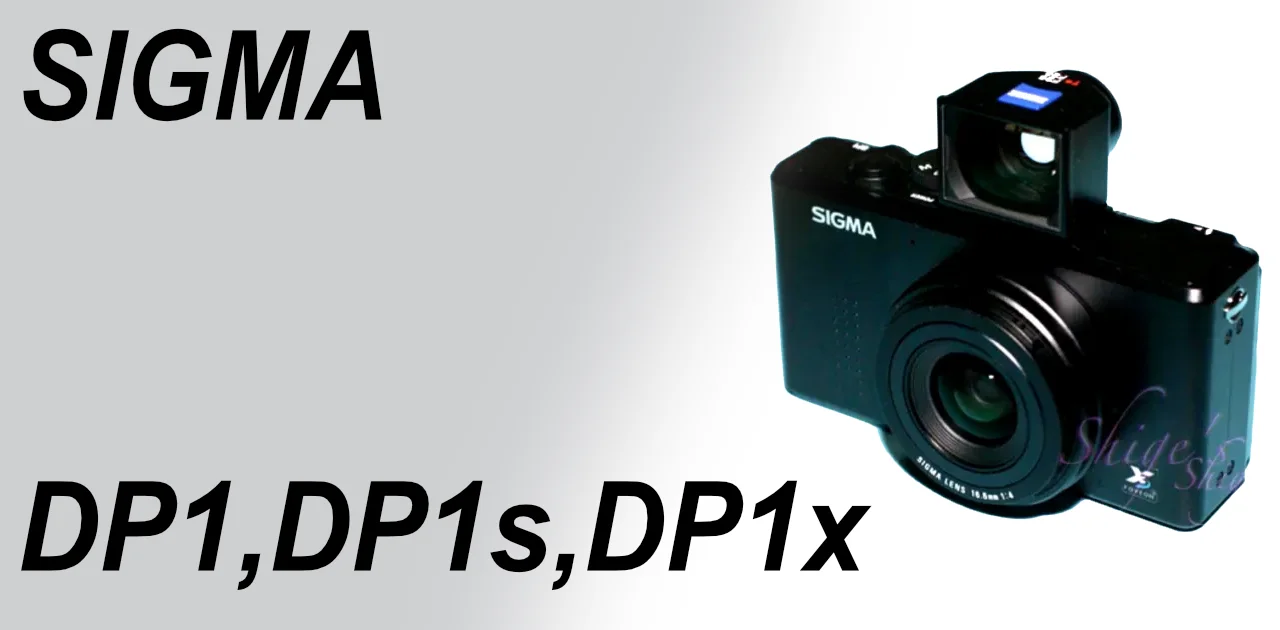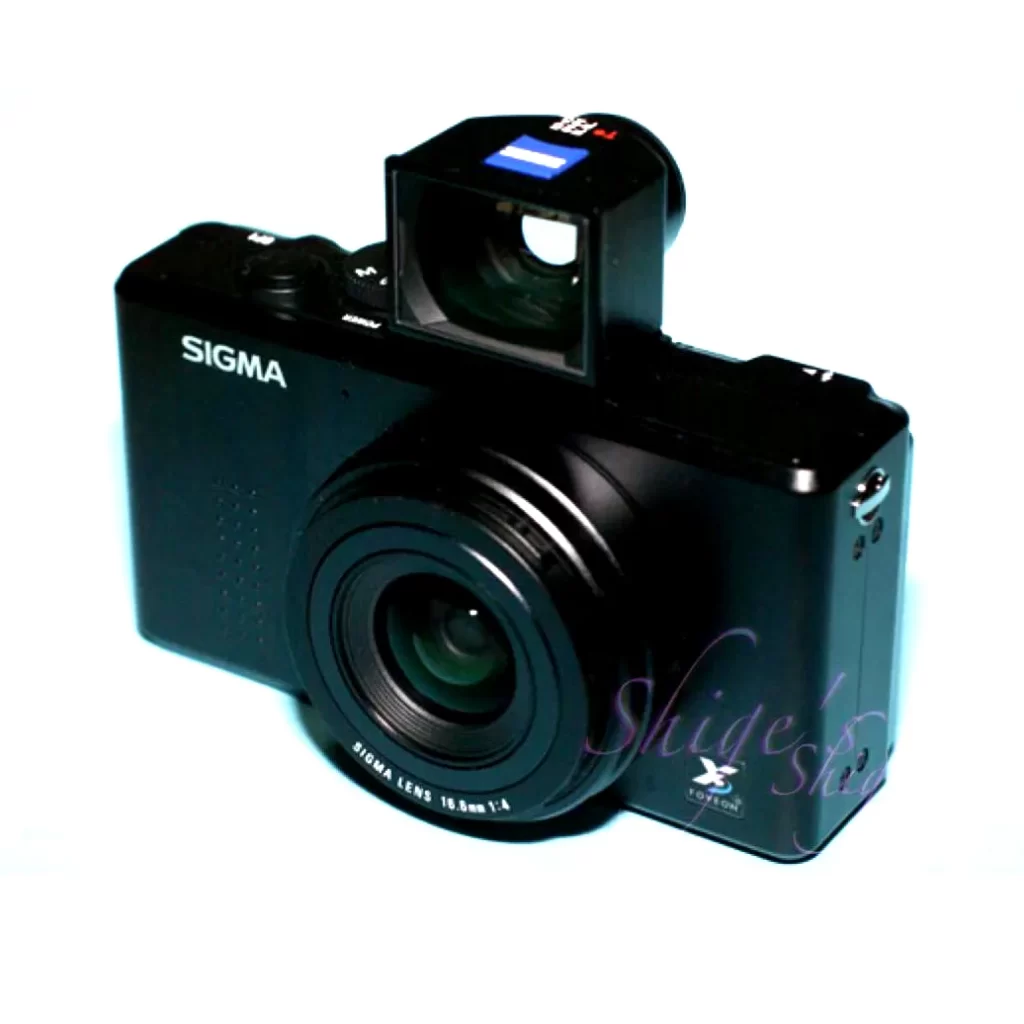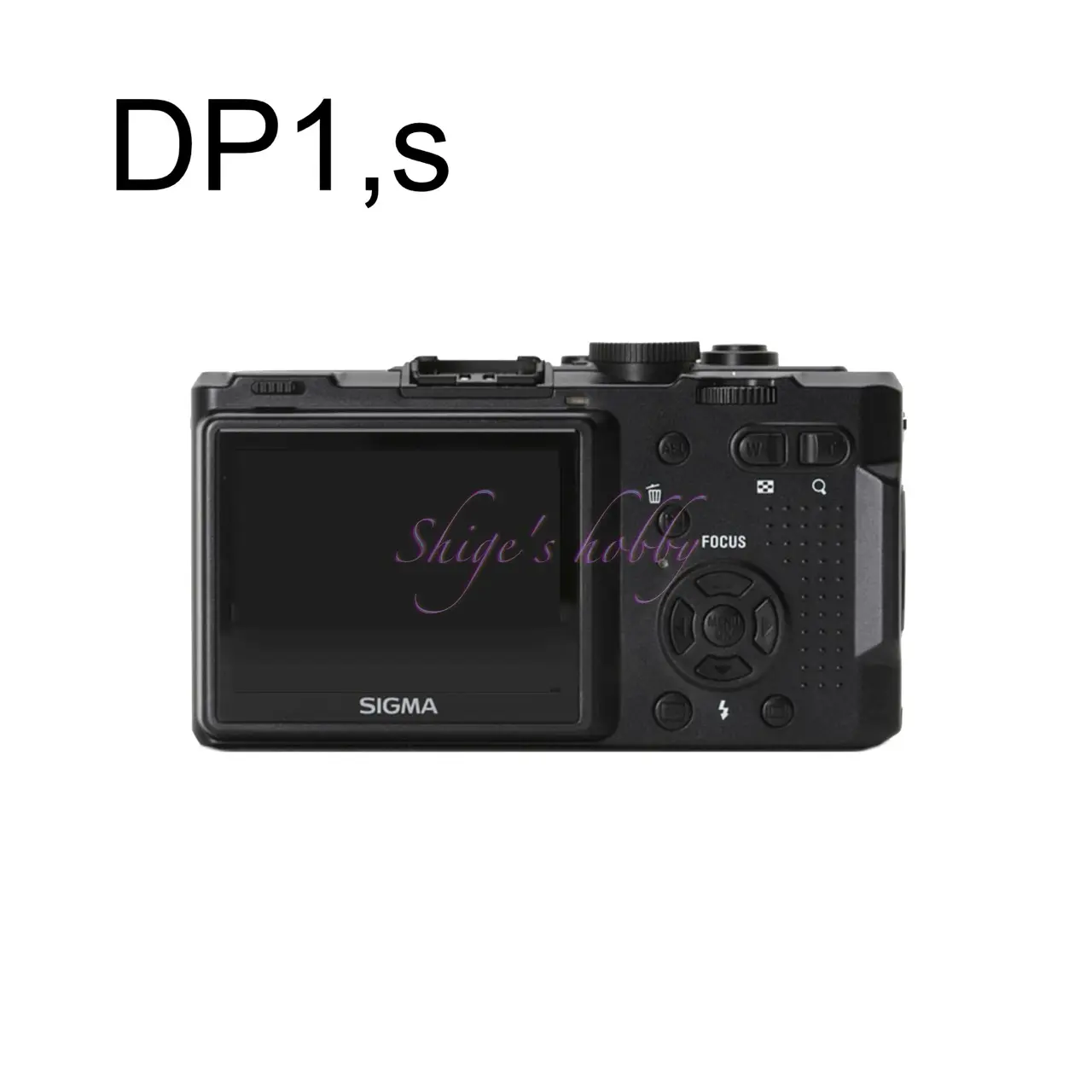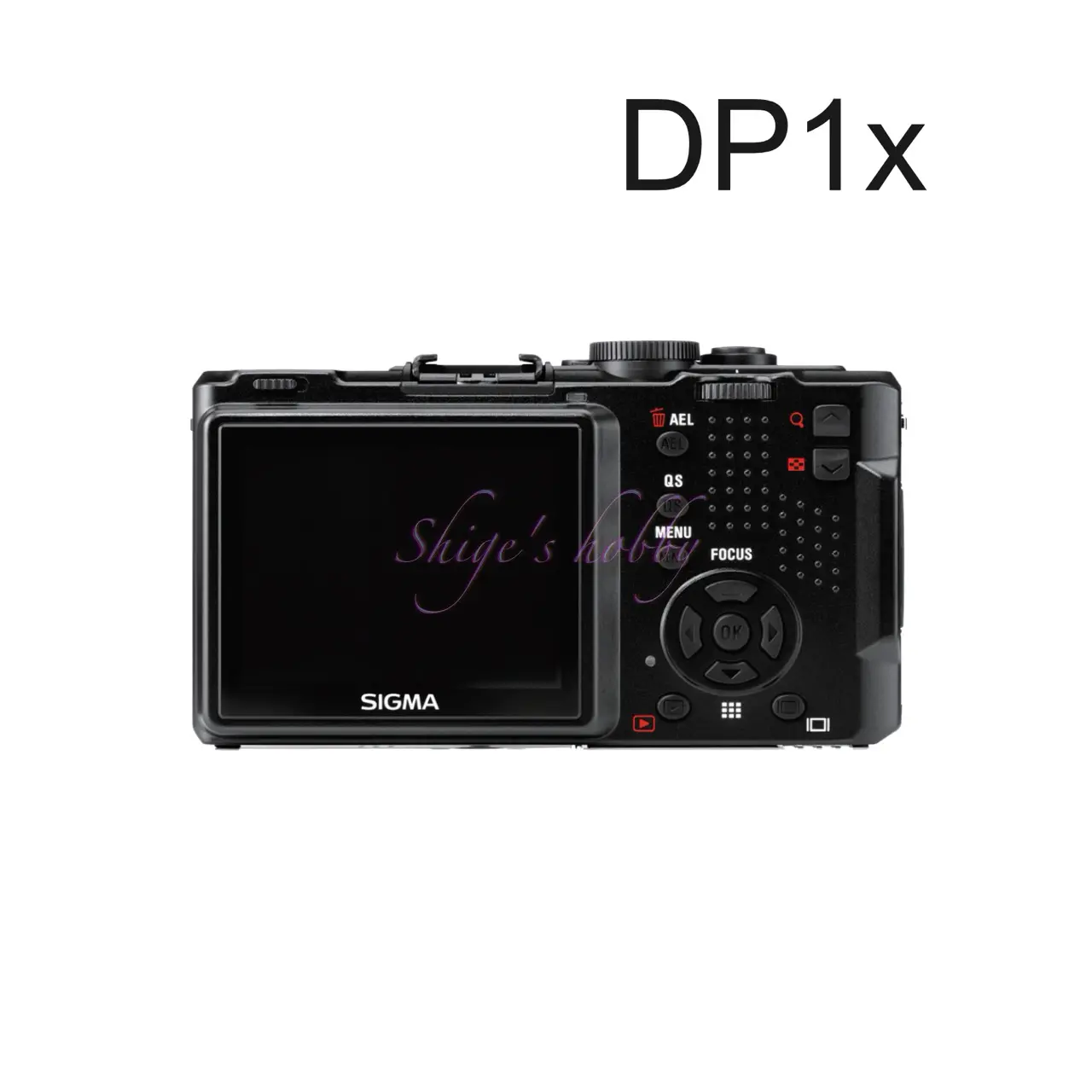Hoping the DP1 would be a snapshot camera, but it turned out to be a disappointment.

Reviews and photo examples of Sigma compact digital cameras DP1,DP1s,DP1x.
Table of contents
Gallery
Review

1.Overview
The DP1 series is a compact digital camera equipped with the same second-generation Foveon sensor as the SD14/SD15 digital SLR cameras, and underwent minor changes approximately every year: the original model in March 2008, the s model in October 2009, and the x model in September 2010.
The recording pixel count is 4.5 megapixels x 3, with an actual pixel count of 4.5 megapixels, but JPEG recording and SIGMA PhotoPro can combine pixels to output a higher pixel count.
The only difference between the DP1 and DP2 is the lens, with the DP1 equipped with a 16.6mm lens and the DP2 equipped with a 24.2mm lens.
The image processing chip used for the DP1 and DP1s is True, while the DP1x, DP2, DP2s, and DP2x are True II.
The battery model number for the DP1 and DP2 series is BP-31, with a 3.7V 1300mAh specification.
Since the DP1 series only supports X3F image recording, image processing is limited to SIGMA PHOTO PRO (hereinafter referred to as SPP).
Improvements to the DP1s
- Added ISO sensitivity 50
- When “Auto” is selected for the ISO sensitivity setting, “ISO AUTO” is displayed
- When “Auto” is selected for the white balance setting, “AWB” is displayed
- Changed the location of the auto bracket display to the top left of the screen
- Added ft (feet) display to the scale displayed in MF mode
- When the screen display button is pressed to display the grid, the LCD monitor switches in the following order: “Icon display”, “Grid display”, “Icon hidden”, “LCD monitor display”, “LCD monitor OFF”
- Source: Digital Camera Watch, article dated October 2, 2009
Improvements to the DP1x
- Installed “QS” (Quick Set) button
- Installed “TRUE II” image processing engine
- Installed “Color mode”
- Installed “My Settings”
- Unified button layout with “DP2”
- Installed AFE (Analog Front End)
- Source: Digital Camera Watch Article from February 1, 2011, ITmedia article, May 31, 2010
・DP1 series, differences in rear buttons
- DP1 and DP1s have all the button function labels printed in white, some buttons are just engraved, and there is no QS button.
- DP1x has all the buttons printed with function labels, some in red.
- Image taken from Sigma handout


2.Usability
The DP1 series has the sharpness that is characteristic of the Foveon, and the results of photos taken in bright light under a clear sky are still good enough to pass for today, but when I tried to use the DP1 on my main subject, cats, I only got sad results.
Cats usually move quickly and prefer dark places, so there are many situations that are a DP1 killer, and I could only take pictures of cats sleeping in the sun in the daytime.
I had high hopes for this camera before it was released, but the original DP1 was a very slow camera and its basic performance was like that of an early digital camera, so it required patience to use it.
Typical problems include a large shutter lag, poor LCD tracking, poor auto white balance (you can adjust it later if you shoot in Raw), short battery life, inability to increase ISO sensitivity, and camera shake.
Despite being such a compact camera, it was unfortunately completely useless for street snapshots that take advantage of the compactness of the camera, like the RICOH GR1 in the film era.
Therefore, the DP1 was only used for me to take pictures of landscapes calmly. However, there was a contradiction in that I could get better results by taking out a single-lens reflex camera.
Both the DP1 and DP2 series had poor battery life, and even if the battery display on the rear LCD screen showed that it was full, it would suddenly die if the battery voltage was low, which was the same as the SD9/SD10.
There were many defective cameras, and I have heard stories of DP1s being returned as DP1xes when they were sent for repairs at certain times. If the first DP1 had at least been equipped with True II and had been released with the same interface as the DP2 series, I think the impression of the product would not have been so bad, but I feel that the first DP1 in particular is one of Sigma’s mistakes in the history of not being able to decide on the release date. The failure of the SD1 digital single-lens reflex camera due to a misjudgment in the release price is probably a similar issue.
However, I honestly praise Sigma for releasing a camera with an almost APS-C sensor in a compact digital camera size in this day and age. The Leica X1 was released in 2009 and the RICOH GR was released in 2013, both of which had APS-C class sensors, so the avant-garde nature of this camera, released in 2008, stands out.
After purchasing the DP1, I was so shocked that I sold it, but then I passed on the minor upgrade version of the DP1, the DP1s, and got the final version, the DP1x. The DP1x had a True II image processing chip, which made it a slightly better camera, but even after two years had passed since the release of the DP1, it was not very usable. It seems that Sigma at the time lacked the basic elemental technology to make a compact digital camera.
Shortly after the release of the first DP series, products were sold on the used market in an outlet-like format and could be purchased relatively cheaply. As of 2024, second-hand prices are on the rise, but Sigma is not currently accepting repairs, so if it breaks, it’s all over.
The photo of the camera body shows the Cosina Zeiss 25/28mm viewfinder to check the composition. Sigma’s original viewfinder, the VF-11, is available for purchase as an external viewfinder.
The external viewfinder only shows the composition, and does not display camera information such as the focus position.
In the past, I found compatible batteries after the original batteries were discontinued, but recently these have also disappeared from the market (there are some suspicious compatible products on Amazon, but I won’t introduce them because I’m afraid), so please be careful if you buy a used body as it may be difficult to obtain a battery.
3.Summary
To sum up the DP1 series, when the release was announced, I had high hopes for the return of the RICOH GR1, as it was a digital camera with a large sensor and a 28mm lens, and it was FOVEON. I got the DP1 on the day it was released, but my expectations were completely betrayed.
There are three models of DP1, but the DP1 and DP1s, which are equipped with the old generation True image processing chip, are quite dangerous, while the DP1x, which is equipped with True II, is a little better, but still good.
In any case, if you use the DP1 series, you need to be prepared for the risk of camera shake and the need for considerable patience in shooting tempo.
Also, since it has been more than 15 years since its release, there is a concern that the electronic board, including the sensor, may deteriorate and cause breakdowns.
As of 2025, riding on the vague boom of old digital cameras, the DP1 series is also seen circulating at surprisingly low used prices. However, it is a 4.5 megapixel compact digital camera, so it is not worth spending several tens of thousands of yen on, even if it is around 10,000 yen. If you want to enjoy the same sensor, you can enjoy more stable shooting with the SD14 or SD15.
・X3F file
X3F files store information on the three colors R, G, and B for each pixel, so the amount of data is three times that of a normal Bayer sensor.
I have been using SIGMA PHOTO PRO (hereinafter referred to as SPP), which processes X3F, since the SD9 era, but I complained that it was unstable and slow. However, when I used it on a Mac mini equipped with an M2 Pro in 2024, I hardly saw any accidental crashes of SPP, and I realized that the image processing speed had reached a practically sufficient speed. It was an event that made me feel the benefit of the improved processing speed due to the increased CPU power of the PC.
I also tried using a freeware utility software that converts X3F to DNG, but in the version I used, it was difficult to achieve the same quality as SPP unless the image after DNG conversion was processed quite a bit, and I had the impression that it was difficult to master. It is unclear whether it has been improved since then.
If the image after DNG conversion can be obtained as equivalent to the SPP default, the ideal workflow for users who are accustomed to other software would be to fine-tune it with other software, but it was not so easy. The conversion software is freeware created by an individual, so users have no right to complain.
I found out that the image can be developed using the image processing software Affinity Photo, so I tested it on this page. I know that I have to study the adjustment method carefully to get the same results as SPP, but since SPP can output adjusted images without stress, I haven’t pursued it too deeply. I think that the better workflow for now is to output JPGs using SPP and then make final adjustments using Affinity Photo.
As of 2024, development of a new Foveon sensor seems to have stalled. I am curious to see if I will come across new X3F data in the future.
Specification
| Items | DP1 | DP1s | DP1x |
| Camera Effective Pixels | Effective pixels: Approx. 14.06 million pixels (2,652 x 1,768 x 3 layers) | Effective pixels: Approx. 14.06 million pixels (2,652 x 1,768 x 3 layers) | Effective pixels: Approx. 14.06 million pixels (2,652 x 1,768 x 3 layers) |
| Lens focal length | 16.6mm F4 (35mm camera equivalent: angle of view equivalent to 28mm) | 16.6mm F4 (35mm camera equivalent: angle of view equivalent to 28mm) | 16.6mm F4 (35mm camera equivalent: angle of view equivalent to 28mm) |
| Lens Construction | 6 elements in 5 groups | 6 elements in 5 groups | 6 elements in 5 groups |
| Max aperture | 4 | 4 | 4 |
| Min aperture | 11 | 11 | 11 |
| Leaf blade | 6 | 6 | 6 |
| Image sensor | FOVEON X3®(CMOS)・20.7×13.8mm | FOVEON X3®(CMOS)・20.7×13.8mm | FOVEON X3®(CMOS)・20.7×13.8mm |
| Image processor | True | True | True II |
| Back LCD | 2.5 inch 230,000 dots | 2.5 inch 230,000 dots | 2.5 inch 230,000 dots |
| View Finder | VF-11 | VF-11 | VF-11 |
| Minimum shooting distance(m) | 0.28 | 0.28 | 0.28 |
| Battery | Lithium-ion battery (BP-31) | Lithium-ion battery (BP-31) | Lithium-ion battery (BP-31) |
| Recorded media | SD,SDHC Card Multimedia Card | SD,SDHC Card Multimedia Card | SD,SDHC Card Multimedia Card |
| Size(mm) W x H x D | W x H x D 113.3mm × 59.5mm × 56.1mm | W x H x D 113.3mm × 59.5mm × 56.1mm | W x H x D 113.3mm × 59.5mm × 56.1mm |
| Weight(g) | 250g (No battery、Memorycard) | 250g (No battery、Memorycard) | 250g (No battery、Memorycard) |
| Release date | March 3, 2008 | October 10, 2009 | September 30, 2010 |
| Price(Yen) | 10万円(Open) | 54,800(Open) | 72,800(Open) |
Options
- Lens hood:HA-11
Reference links
Update history
- 2025.4.13
- 2024.06.26:Update the article
- 2024.03.27:Update the article
- 2023.01.01:First draft
Affiliate Link
- Sigma・Ads by Amazon
- Sigma lens・Ads by Amazon
- Sigma books・Ads by Amazon

Leave a Reply